Isla San Pedro
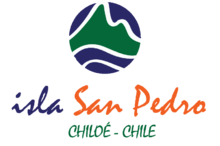
Isla San Pedro is a private island located off the southeastern shore of Chiloé Island within the commune of Quellón, considered an end-station of the Panamerican Highway. Chiloé Island is the largest island in the Chiloé Archipelago, the second largest island in Chile, after the Isla Grande de Tierra del Fuego, and the fifth largest in South America. The Chiloé Archipelago is separated from the western shores of Chile by the Gulf of Ancud (Spanish: Golfo de Ancud) and the Gulf of Corcovado (Spanish: Golfo de Corcovado).
Geography


While many nearby areas are developed, Isla San Pedro remains primarily in its natural state with only a few cabins, a lodge, hiking trails, and 33.46 kilometers (20.79 miles) of road encircling the perimeter providing access to numerous sandy beaches. There are two lakes located on the island and cliffs along the coast may rise more than 500 meters (1640 feet) above sea level. Isla San Pedro is accessed by boat via nearby Chiloé Island.
Climate
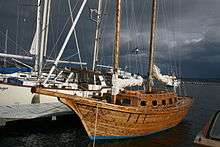

Chiloé has a humid and cool temperate climate. Temperatures are generally relatively moderate, not extremely hot or cold. The changes between summer and winter are also usually moderate. The western side of the island is rainy and wild. The eastern shore is warmer and drier due to it being on the rain shadow of the interior mountains.
The commune of Quellón has an oceanic climate. Summers are mild and precipitation is lower. February is the driest month. Winters are cool and wet, but mild. Few days are dry in winter because there are 22–24 days with measurable precipitation from June to August. However, snowfall is rare, with most years having no record of snowfall.
Flora and Fauna
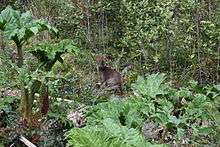
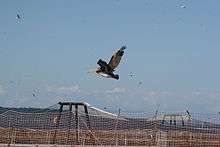


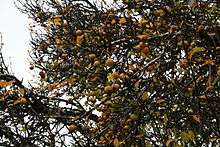
There are numerous species of birds that call this region and the nearby mountains home. Isla San Pedro is home to Chucao tapaculos (Scelorchilus rubecula), black-necked swans (Cygnus melancoryphus), slender-billed parakeets (Enicognathus leptorhynchus), pelicans, cormorants (Phalacrocoracidae), and Chilean pigeons (Patagioenas araucana). In addition, the southern pudú, the second smallest deer in the world, and can be found on the island. Several species of whales have been sighted around the Chiloé Archipelago, including blue whales and southern right whales, which are critically endangered. In addition, sea lions, sea otters, penguins, and dolphin can be seen from Isla San Pedro.
Charles Darwin visited Isla San Pedro in 1834, and later wrote of his experience in The Voyage of the Beagle.[1] It was here on the island that Darwin first collected the now critically endangered Darwin's fox (Lycalopex fulvipes).[2] This was the first specimen ever collected and was donated to the Zoological Society of London.[2] Darwin also wrote of his failed attempts to climb the summit of San Pedro due to an impenetrable forest.[2]
The Chiloé Archipelago’s original vegetation is Valdivian temperate rain forest, which is a forest with a dense understory and a large variety of mosses and ferns. Isla San Pedro consists of approximately 16,000 acres filled with dense hardwood trees. Types of trees on the island include the Luma apiculata, the Ciprés de las Guaitecas (Pilgerodendron), the Drimys winteri (winter's bark or canelo - Mapuche sacred tree), the Nothofagus dombeyi (Dombey's beech, coigue, coihue, or coigüe (from koywe in Mapuche language)), and the Fitzroya cupressoides. In addition, the island boasts numerous fruit trees, including apple trees and cherry trees, and Chilean rhubarb (Gunnera tinctoria), known as nalca. Chicha, a local alcoholic beverage, was made from these apples by the original inhabitants through a process called maja.
The national flower of Chile, the copihue (Lapageria rosea), can be found on Isla San Pedro. Purple thistles are also common on the island.
History
The Chiloé Archipelago was first inhabited by two main peoples: the Chonos and the tribe of the "Huilliches."[3] The Chonos were from the South and were a tough, nomadic people that spoke their own tongue.[2] They were known to have great sailing skills and were fishermen.[2] The Huilliches were pacific people and known for their farming skills.[2] They were said to have resembled the Mapuche, an indeginous people to Chile, and the two would form alliances.[2]
A little known whaling history is associated with Chiloé, and more particularly with Isla San Pedro. Christen Christensen (shipowner) was one of the most important Norwegian shipping and whaling businessmen at the start of the 20th Century and was very interested in developing whaling activities from land stations along the coast of South America.[4] In 1909, after some investigation by his son August Christensen and his crew, a Norwegian company known in the native language as ‘Sociedad Ballenera del Pacifico’ (Pacific Whaling Company) and a port were established on San Pedro with catcher boats and a land station known as ‘A/S Pacific’.[2] August managed the ‘A/S Pacific’ from 1909 until 1913, when whaling operations on Isla San Pedro came to a close.[2]
Articles from the time suggest a good relationship was formed between the ‘A/S Pacific’ and the local Chilean community, as there were many locals employed at the land station. A local journalist invited to visit San Pedro wrote that, “the small port of San Pedro is composed mainly by the whaling station and its installations, it is a very scenic place and its configuration resemble the mouth of a dog,” and that the installations were “splendid.”[5] He described the afternoon spent on San Pedro as “very pleasing and we will always remember the kindness of Mr. Christensen, a 23 year old young man, who animated our stay at the whaling station with his exquisite piano and his unique courtesy.”[2]
Local Culture and Cuisine

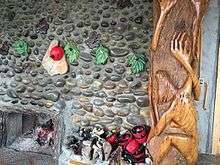
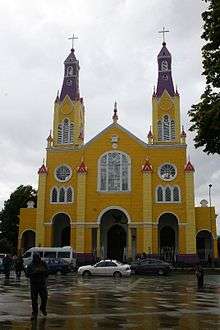
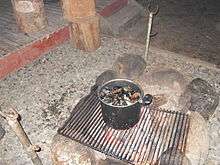
The region is known for having master artisans. The culture of the Chiloé Archipelago differs from the rest of the country due to its geographic isolation.[6] Because of this, its people have had to make their own homes, furniture, utensils, clothing, and shelter with their own ingenuity and the materials available in their environment.[2] This has given rise to a great tradition of crafts that is now reflected in its basketry, weavings made from handspun wool, wooden items, and stone fireplaces.[2]
Chiloé is also known for its unique architecture. Beginning with the Jesuit missionaries, who began to build churches out of local, accessible resources, Chiloé became known for its churches (Churches of Chiloé) that were made entirely of native timber in order to withstand the weather. In addition, the use of flat wooden tiles as shingles (wood shingles) became a staple in its architecture. Sixteen of these Churches of Chiloé still remain and have been designated a UNESCO World Heritage Site.[7]
Homes and hotels in the region also employ the use of wood shingles, usually painted in bright, bold colors that adds to the charm of Chiloé. Depending on the region, palafitos are another distinct architecture feature of Chiloé. These are traditional fisherman’s houses built on wooden stilts.
Chiloé cuisine showcases its surrounding seafood selection. There are many floating salmon farms surrounding Chiloé and locally caught shellfish are a part of most meals. Traditional cuisine includes curanto and paila marina. Curanto is a dish made from fish, clams (almejas), ribbed mussels (cholgas), giant barnacles (picorocos), meats, and potatoes of Chiloé wrapped in leaves and cooked in a hole in the ground by hot stones.[8] It can also be cooked in a pot over a bonfire becoming pulmay. Paila marina is a Chilean seafood soup or stew served in a paila, an earthenware bowl.
Birthplace of Chilote Vodka
Keeping with the tradition of using ingenuity and resources available in the local environment, as of 2015, Isla San Pedro is the birthplace of Sirena de Chiloé Premium Hand Crafted Vodka. This vodka is triple distilled from heirloom potatoes, Solanum tuberosum tuberosum, that are grown on the island. While this type of potato is grown throughout the world, it is indigenous to the Chiloé Archipelago.[9][10]
References
- ↑ Darwin, Charles Robert. The Voyage of the Beagle. Vol. XXIX. The Harvard Classics. New York: P.F. Collier & Son, 1909–14; Bartleby.com, 2001. www.bartleby.com/29/
- 1 2 3 4 5 6 7 8 9 10 11 12 Id.
- ↑ Gonzales, Paula and Errazuriz, Matias. Chiloé, Gateway to Patagonia. NICEYE, August 3, 2009.
- ↑ Quiroz, D. and Pastene, L.A. 2014. Norwegian whaling in Chile in the 20th Century and its influence on Chilean local communities. In: Jan Erik Ringstad (editor). Whaling and History IV. Commander Chr. Christensen's Whaling Museum, part of Vestfoldmuseene IKS, Sandefjord. 61-70. 192pp.
- ↑ La Cruz del Sur (Ancud, Chile), 29 January 1913.
- ↑ Flaño, Trinidad and Lira, María José. Artesanos de Chiloé: Artisans of Chiloé. Origo Ediciones 2012, Pg. 3.
- ↑ UNESCO World Heritage Centre. "Churches of Chiloé - UNESCO World Heritage Centre". whc.unesco.org. Retrieved 2016-03-10.
- ↑ Rivas, Pilar; Ocampo, Carlos (2002). "El antiguo curanto chilote". Fondecyt 1020616 “Proceso y orígenes del poblamiento marítimo de los canales patagónicos: Chiloé y el núcleo septentrional" (in Spanish)
- ↑ Jaime Solano Solis; et al. (July 2007). "Molecular description and similarity relationships among native germplasm potatoes (Solanum tuberosum ssp. tuberosum L.) using morphological data and AFLP markers". Electronic Journal of Biotechnology. scielo.cl. Retrieved 2016-03-10.
- ↑ "Using DNA, scientists hunt for the roots of the modern potato | EurekAlert! Science News". eurekalert.org. 29 Jan 2008. Retrieved 2016-03-10.